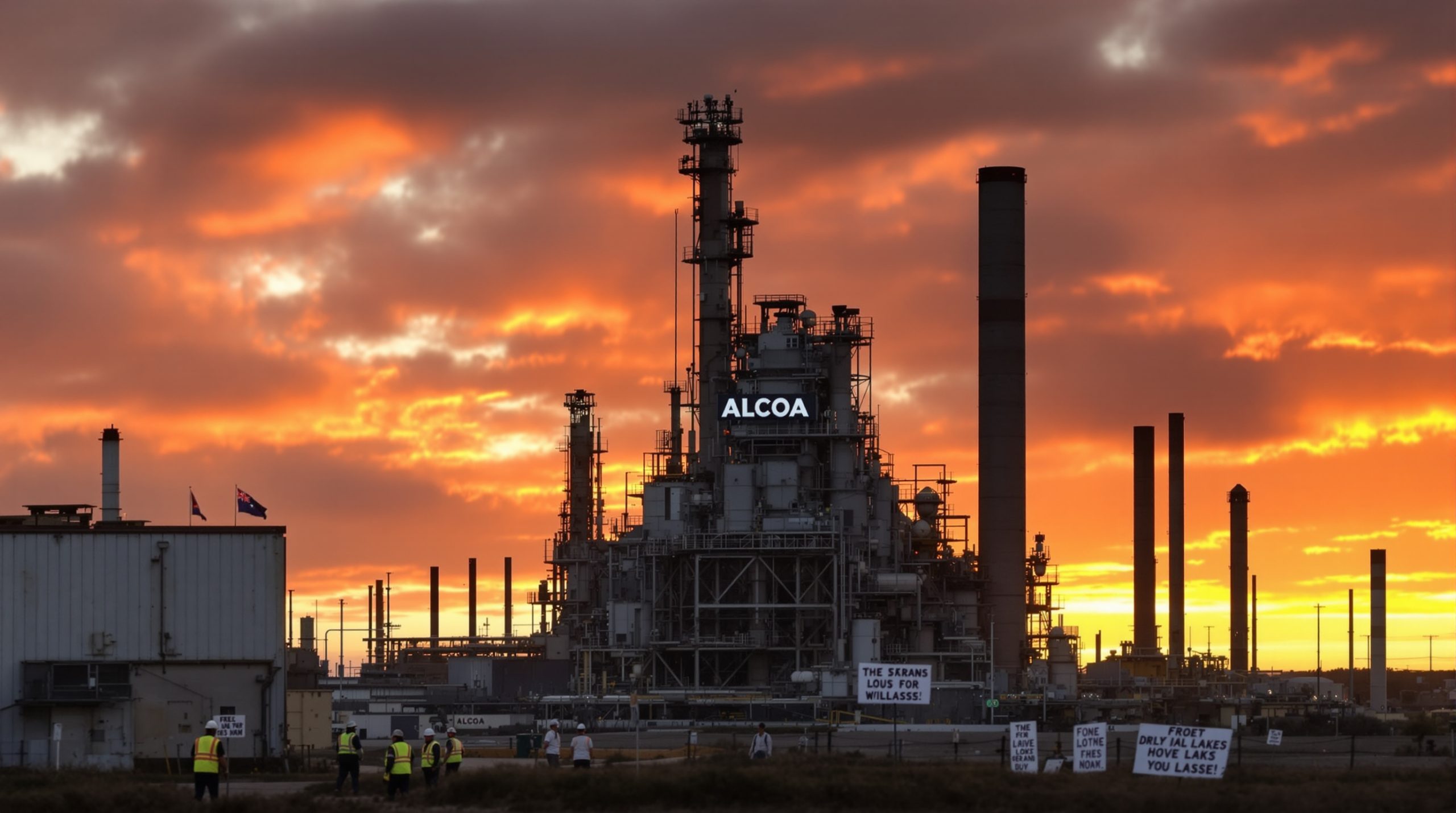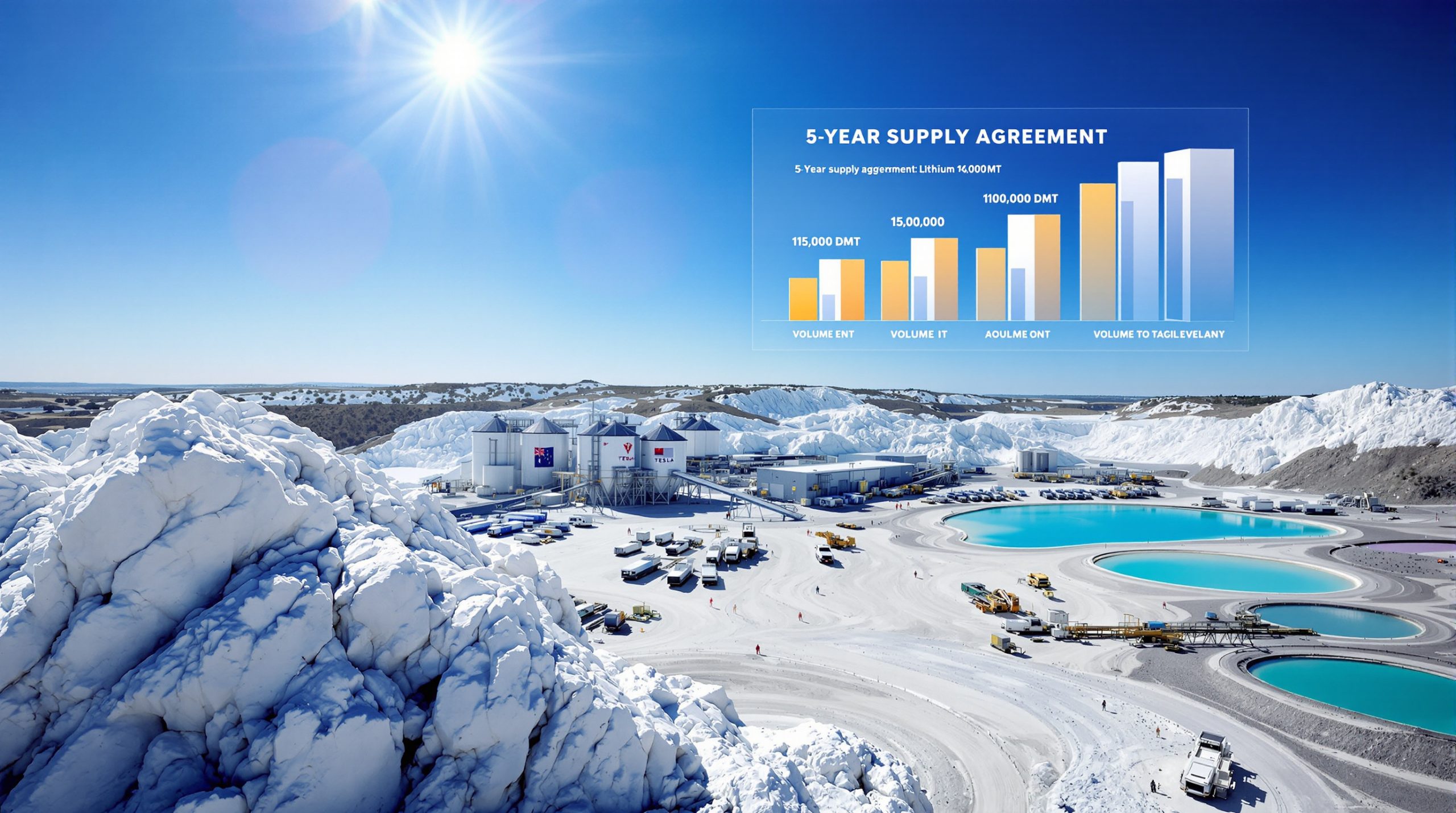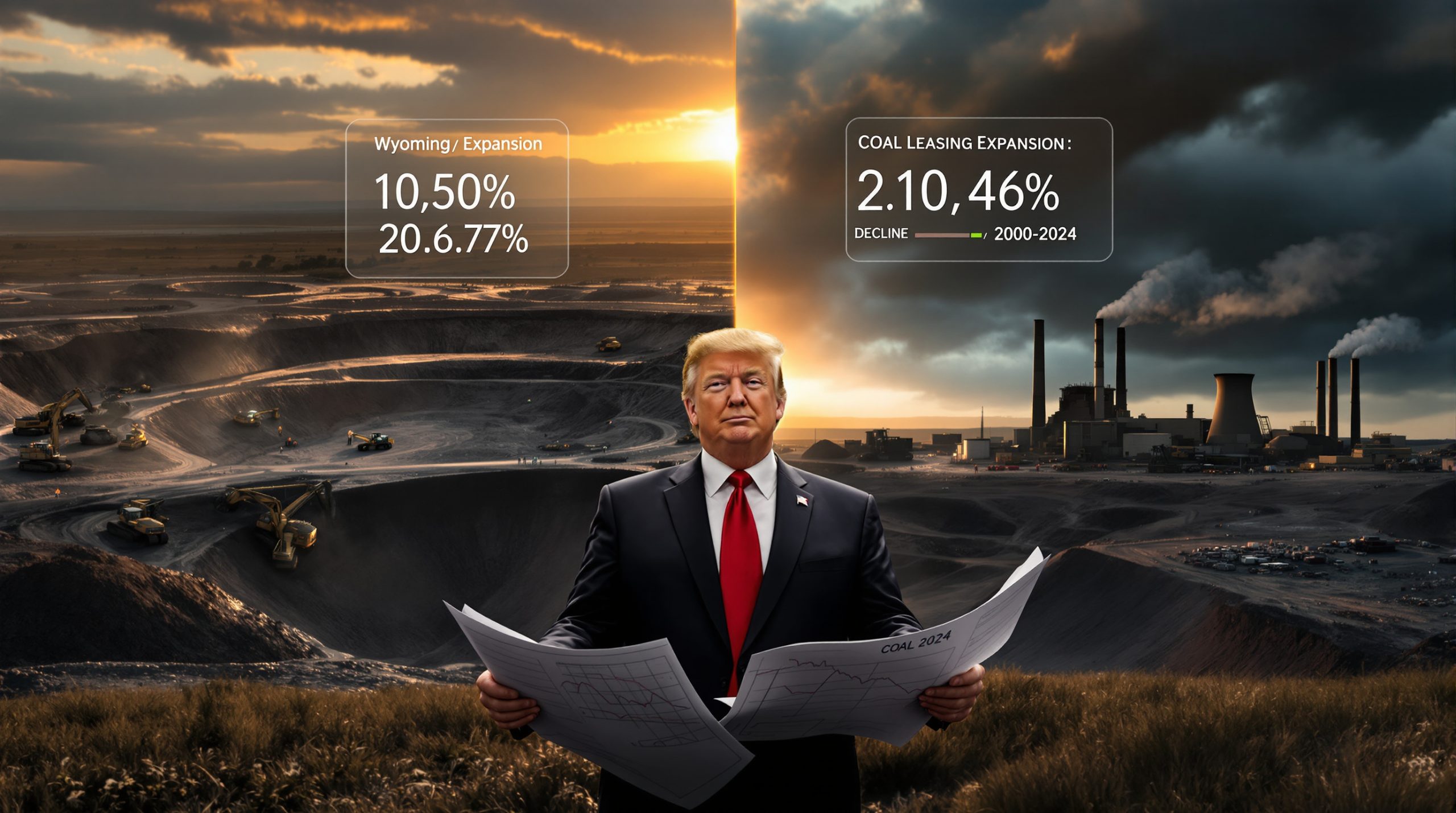What Factors Are Behind Glencore's Copper Production Decline?
Glencore's copper production has faced significant challenges in recent years, with output expected to fall for the fourth consecutive year in 2025. This persistent downward trend represents approximately a 40% reduction from 2018 levels, creating mounting concerns among investors who see the company missing crucial opportunities in a strong copper market.
The mining giant's struggle to maintain copper production comes at a particularly inopportune time, as global demand for the metal continues to strengthen amid the energy transition and electrification trends. Industry analysts point to several interconnected factors behind this prolonged production slump.
Aging Mine Assets and Grade Deterioration
The natural aging process of Glencore's copper portfolio presents perhaps the most fundamental challenge to production volumes. Several key operations that once served as the backbone of the company's copper business are now showing signs of maturity that significantly impact overall output:
- Many flagship mines in Glencore's portfolio have reached advanced stages in their lifecycle, resulting in diminishing ore quality
- Historical high-grade zones that previously delivered exceptional copper yields have been largely depleted across multiple operations
- Lower-grade ore necessitates processing substantially more material to achieve similar copper output, straining equipment and increasing costs
- Technical assessments indicate that grade decline at operations like Collahuasi has progressed more rapidly than initially projected in mine plans
Mining engineers familiar with the operations note that while grade deterioration was anticipated in long-term modern mine planning, the rate of decline has exceeded expectations at several key sites, creating steeper production challenges than forecast.
Operational and Technical Disruptions
Beyond the natural aging of assets, Glencore has encountered an unusually high frequency of operational setbacks across its copper business:
- Recurring equipment failures in critical crushing circuits and processing facilities have led to extended downtime
- Maintenance periods have consistently exceeded scheduled timeframes, indicating deeper issues with asset condition
- Weather-related disruptions, particularly heavy rainfall events at South American operations, have impacted pit access and ore movement
- Power supply inconsistencies continue to plague African copper assets, with grid reliability issues causing production interruptions
- Mechanical availability metrics for key processing equipment have fallen below industry benchmarks, creating persistent bottlenecks
Industry experts note that while individual disruptions might be dismissed as normal operational challenges, the pattern and frequency suggest more systemic issues with maintenance planning and execution across the copper portfolio.
How Has Glencore's Performance Compared to Industry Peers?
The underperformance in copper production has materially impacted Glencore's stock performance relative to industry rivals. While the broader mining sector has experienced volatility, Glencore's position has deteriorated more significantly than most peers over the medium term.
Market Position and Share Performance
The numbers tell a compelling story about Glencore's relative positioning within the mining sector:
- The company's shares have dropped approximately 30% over the past three years, significantly underperforming major mining peers despite recent gains
- This decline occurred during a period when copper prices reached record levels, highlighting the missed opportunity cost
- Market capitalization has suffered as production volumes fell during a period of strong copper demand and pricing
- Strategic positioning has weakened as competitors like Anglo American consolidated copper assets through the Teck Resources acquisition
The company did experience a 17% share price increase in September 2025, primarily driven by rising copper prices following production disruptions at Freeport-McMoRan's Indonesian operations. However, analysts view this as a market-driven improvement rather than a reflection of operational enhancements.
Financial Impact of Production Challenges
The operational challenges have created material financial consequences across multiple metrics:
- Copper's contribution to overall earnings has steadily decreased as production volumes declined
- EBITDA from the copper division has fallen below historical averages and analyst expectations
- The company has not reported a net profit since the first half of 2023, creating concerns about sustained profitability
- Cost per tonne metrics have increased due to processing inefficiencies and lower throughput volumes
- Reliance on coal division profits has increased, making recent coal price declines particularly problematic for overall financial performance
Financial analysts highlight that this creates a challenging situation where the company's historically strongest division (coal) faces commodity price headwinds while its strategic growth division (copper) struggles with operational execution.
What Strategic Responses Has Glencore Implemented?
Facing mounting pressure from investors, Glencore's management has begun implementing various initiatives to address Glencore copper production challenges and improve overall company performance. These responses range from operational improvements to broader strategic positioning.
Operational Recovery Plans
The company has focused on several tactical measures to address immediate production shortfalls:
- Implementation of accelerated mining schedules at key copper operations to access higher-grade material
- Selective processing of higher-grade ore zones where available to maximize metal production
- Operational efficiency improvements targeting $1 billion in cost reductions across the business
- Deferral of non-critical maintenance activities to maximize production uptime in the near term
- Strategic utilization of previously stockpiled ore to maintain mill throughput despite mining constraints
Mining analysts note that while these measures may provide short-term production improvements, some (particularly maintenance deferrals) could create longer-term risks if not carefully managed.
Production Forecasting and Guidance
Glencore has maintained an optimistic outlook on production recovery, though market skepticism remains:
- The company has maintained its full-year copper production guidance despite first-half shortfalls
- Current projections call for a significant production increase in the second half of 2025
- Approximately 60% of annual copper production is now targeted for H2, creating a heavily back-loaded production profile
- The long-term vision includes returning to 1 million tonnes annual copper production by 2028
- Management has scheduled a capital markets day in December 2025—the first in three years—to outline its copper growth strategy
Industry observers note the ambitious nature of these forecasts, particularly given recent performance history. The average analyst estimate for copper production remains below the company's guidance, reflecting widespread skepticism about operational execution.
What Strategic Alternatives Has Glencore Explored?
Glencore has considered various strategic alternatives to address its challenges, though many initiatives have failed to materialize or been abandoned after initial consideration. This pattern of exploring but not executing major strategic shifts has itself become a point of investor concern.
Abandoned Strategic Initiatives
The company has initiated but ultimately not completed several major strategic shifts:
- A failed acquisition attempt of Teck Resources' metallurgical coal assets, which was rejected by Teck
- Aborted discussions with Rio Tinto regarding a potential merger that could have created a mining powerhouse
- Announced and then reversed plans to spin off the coal business as environmental pressures mounted
- Considered but ultimately abandoned a potential New York Stock Exchange listing that might have enhanced valuation
- Explored selling a controlling stake in its major African copper mine but did not conclude a transaction
This pattern suggests internal strategic uncertainty or execution difficulties with major corporate initiatives, creating what some investors describe as "strategic drift" at a critical time for the company.
Investment and Development Plans
Despite challenges with major corporate transactions, Glencore has advanced several growth-focused initiatives:
- Filed applications for $13 billion in new copper projects in Argentina, signaling commitment to long-term copper growth
- Begun evaluating potential divestment of underperforming copper smelters to streamline the business
- Explored strategic partnerships for major project developments to share capital requirements and risk
- Implemented targeted capital allocation frameworks focusing on highest-return opportunities
- Investigated brownfield expansion options at existing copper operations to leverage current infrastructure
Industry observers note the considerable time lag between project application and production for major copper developments, suggesting that even successful execution of the Argentina strategy would not address near-term production challenges.
How Have Investors Responded to Glencore's Challenges?
Institutional investors have expressed growing frustration with Glencore's underperformance, with several large shareholders privately voicing concerns about the company's strategy and operational execution. This dissatisfaction has begun to manifest in more direct pressure on management.
Investor Concerns and Pressure
Key shareholder concerns center around several themes:
- Widespread dissatisfaction with operational performance across mining assets, particularly in copper
- Pointed questions about strategic direction and leadership decisions after several abandoned initiatives
- Increasing calls for more decisive action to address production challenges rather than incremental measures
- Specific concerns about the company's ability to capitalize on copper market opportunities at a critical market juncture
- Growing skepticism regarding production recovery projections given past performance issues
While the company's two largest shareholders—former CEO Ivan Glasenberg and Qatar's sovereign wealth fund—reportedly remain supportive of management, other institutional investors have become increasingly vocal in private forums about the need for change.
Market Sentiment and Analyst Perspectives
The financial community's view of Glencore has deteriorated amid persistent challenges:
- Market confidence in management's ability to deliver operational improvements has declined significantly
- Analyst models have incorporated lower expectations for production forecasts despite company guidance
- There's general recognition that coal price declines are largely beyond management control but operational execution is not
- Performance metrics increasingly focus on operational execution rather than strategic vision or market positioning
- Some analysts suggest that expectations have fallen so low that merely meeting guidance could positively surprise markets
As one analyst from RBC Capital Markets noted, "The second half is hugely important. Expectations are at rock bottom—even if they hit the bottom of guidance, they are going to exceed expectations." This environment of diminished expectations creates both risks and opportunities for market perception.
What Specific Challenges Face Glencore's Copper Smelting Operations?
Beyond mining operations, Glencore's copper smelting business faces significant challenges that have prompted consideration of facility closures or divestments. These downstream assets, once seen as providing valuable integration, now represent a potential liability in certain regions.
Smelter Performance Issues
The company's smelting operations face multiple challenges that have eroded their economic viability:
- Financial data indicates serious cost control problems at both Horne and Asturiana smelters
- Rising energy costs have disproportionately impacted smelter profitability due to their intensive electricity requirements
- Increasingly stringent regulatory compliance requirements have necessitated additional capital expenditures
- Competition from newer, more efficient smelting facilities in Asia has created treatment charge and refining charge pressure
- Aging infrastructure across several smelters requires significant capital investment to maintain safe and efficient operations
Internal communications have characterized cost structures at certain smelters as "out of control," with some executives suggesting that closures may be necessary if performance cannot be improved. The Glencore Chile smelter impact has been particularly significant for regional supply dynamics.
Strategic Options for Smelting Business
The company is evaluating several strategic alternatives for its smelting operations:
- Potential closure of consistently underperforming smelting assets that lack clear paths to profitability
- Exploring divestment opportunities for non-core smelting operations to operators with regional advantages
- Targeted modernization investments at strategically important smelting facilities to improve efficiency
- Portfolio rationalization to focus on highest-return assets while divesting marginal operations
- Seeking closer integration of smelting operations with mining assets where logistical synergies exist
Industry experts note that while smelting operations have traditionally provided a hedge against concentrate market volatility, their fixed cost structures have become increasingly challenging to manage in current market conditions.
What Trading Business Challenges Is Glencore Facing?
Glencore's historically strong trading business, once considered the company's crown jewel and differentiator from other miners, has also faced challenges with key personnel departures and performance issues. This raises questions about the sustainability of trading advantages that once defined the company's market position.
Trading Personnel Changes
The trading division has experienced significant personnel turnover at senior levels:
- Several senior traders have departed for competitors, including Jason Kluk (nickel and ferroalloy trading head) who left in November 2024
- Sam Imfeld from the aluminum team agreed to join Vitol Group, a major energy trading rival expanding into metals
- Coal-trading head Ruan van Schalkwyk announced retirement following disappointing first-half performance
- Other senior traders including Peter Hill (iron ore trading head) and Jyothish George received offers from Vitol in 2024
- The retirement of founding-generation traders has accelerated, creating potential institutional knowledge gaps
While company representatives maintain that trading strength derives from volumes and relationships rather than individuals, the pattern of departures has raised questions about the trading division's competitive position.
Trading Performance Metrics
Trading results have shown concerning trends across several business lines:
- First half of 2025 saw one of the worst performances on record from the energy and coal trading unit
- Increased competition in metals trading space has compressed margins in traditional high-return areas
- Changing market dynamics, particularly greater transparency, have eroded some traditional trading advantages
- Management has raised trading profit goals for the first time since 2017, signaling expectations for improvement
- The company continues to emphasize leveraging metal marketing volumes and network relationships as competitive advantages
Market observers note the irony that while Glencore was once known for exceptional market timing, its recent strategic decisions have often appeared mistimed relative to commodity cycles, particularly in copper.
How Does Glencore Plan to Return to Growth in Copper Production?
Despite current challenges, Glencore has outlined plans to reverse the copper production decline and return to growth in this strategically important metal. The strategy combines near-term operational improvements with longer-term growth projects.
Short-Term Recovery Strategies
Immediate focus areas aim to stabilize and then increase production from existing assets:
- Intensified focus on operational reliability improvements across the copper portfolio
- Targeted investments in critical equipment upgrades at high-priority bottleneck points
- Enhanced maintenance planning and execution to reduce unplanned downtime
- Optimization of mining sequences to access higher-grade zones within existing pits
- Implementation of improved ore blending strategies to maximize recoveries while maintaining throughput
Technical experts note that while these measures can improve performance incrementally, reversing a multi-year production decline typically requires more substantial intervention, particularly at mature operations facing grade challenges.
Long-Term Growth Initiatives
Longer-term growth relies heavily on development projects and potential acquisitions:
- Development of major copper projects in Argentina forms the centerpiece of long-term growth plans
- Management continues to evaluate potential strategic acquisitions of copper assets despite past setbacks
- Brownfield expansions at existing operations are being evaluated to leverage infrastructure
- Technological innovations in recovery methods are being explored to improve yields from lower-grade material
- Strategic positioning emphasizes copper as a key future-facing metal central to the company's long-term portfolio
The $13 billion investment in Argentine copper projects represents the most significant commitment to copper growth, though industry analysts note that production from these assets remains several years away at minimum.
What Is the Outlook for Glencore's Copper Production?
The immediate outlook for Glencore's copper production remains challenging, though the company maintains it can achieve a significant turnaround in coming years. Both near-term forecasts and longer-term projections face considerable skepticism from market participants.
Near-Term Production Projections
Current year production depends heavily on second-half performance:
- Company guidance relies on producing approximately 50% more copper in H2 2025 than in the first six months
- Analyst consensus reflects skepticism about the company's ability to achieve its full-year targets
- Operational stability at key mines remains critical to meeting production forecasts
- Weather conditions and equipment reliability continue to present significant risk factors
- Even if targets are met, 2025 production would be approximately 19% lower than original forecasts made in 2022
This creates a situation where near-term expectations have been lowered to the point that meeting revised guidance could be viewed positively despite representing decline from historical performance.
Long-Term Copper Strategy
The longer-term vision focuses on returning to historical production levels and then growing beyond them:
- Management has set a target of returning to 1 million tonnes annual production by 2028
- Major growth is dependent on successful development of new projects in Argentina
- The company continues to evaluate potential strategic acquisitions to supplement organic growth
- Positioning emphasizes copper's critical role in energy transition and electrification
- The December 2025 capital markets day is expected to provide more detailed timelines and milestones
Industry analysts note that while the long-term copper market fundamentals remain strong, Glencore's ability to capitalize on them depends on execution capabilities that have recently been called into question. The company will need to closely monitor the global copper supply forecast to position itself effectively.
Glencore's Path Forward
Glencore faces a critical juncture as it works to address copper production challenges while navigating broader market pressures. The company's ability to execute operational improvements, develop new projects, and potentially pursue strategic transactions will determine whether it can reverse recent underperformance and capitalize on strong long-term copper market fundamentals.
The upcoming capital markets day in December represents a crucial opportunity for management to articulate a convincing strategy for copper growth and broader company direction. Meanwhile, investor patience appears to be wearing thin, increasing pressure for demonstrable results in the near term.
Success will require addressing fundamental operational issues, executing on development plans, and potentially considering more radical strategic alternatives if performance does not improve. The next 12-18 months will likely prove decisive in determining whether Glencore can regain its former position as a leading copper producer or continues to lose ground to more nimble competitors implementing innovative copper investment strategies and embracing emerging mining industry trends.
Disclaimer: This analysis contains forward-looking statements and projections about future copper production and company performance. These statements involve risks and uncertainties, and actual results may differ materially from these projections. Readers should consider this content as analysis rather than investment advice.
Want to Spot the Next Major Mineral Discovery Before the Market?
Discovery Alert's proprietary Discovery IQ model instantly identifies significant mineral discoveries on the ASX, delivering real-time notifications that give investors a crucial market edge. Explore how historic discoveries have generated exceptional returns by visiting the dedicated discoveries page and start your 30-day free trial today.




